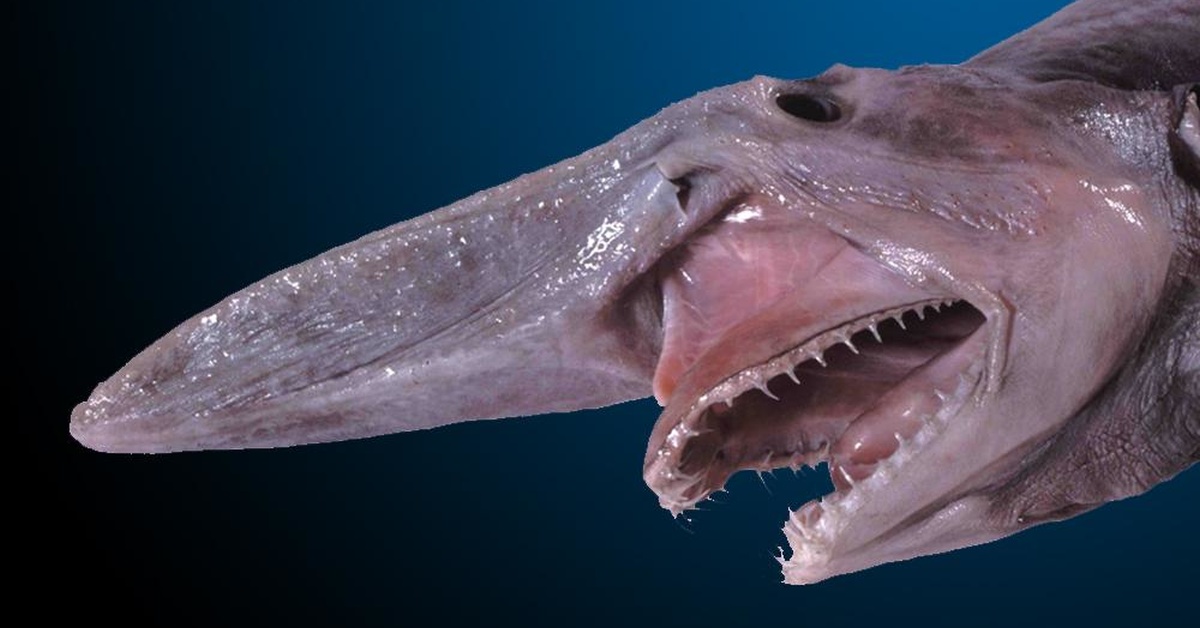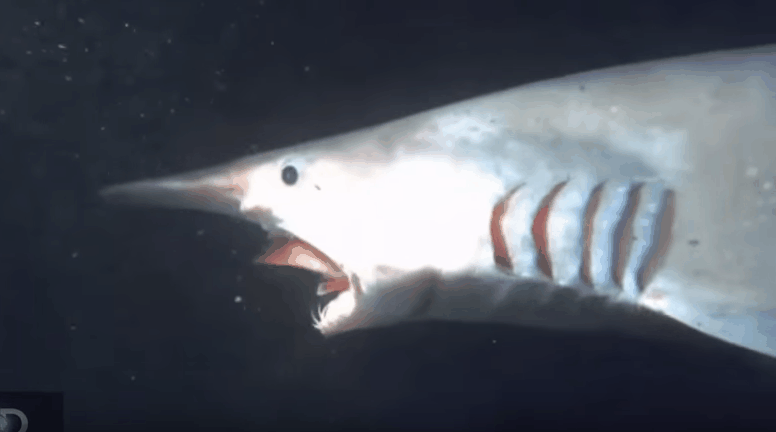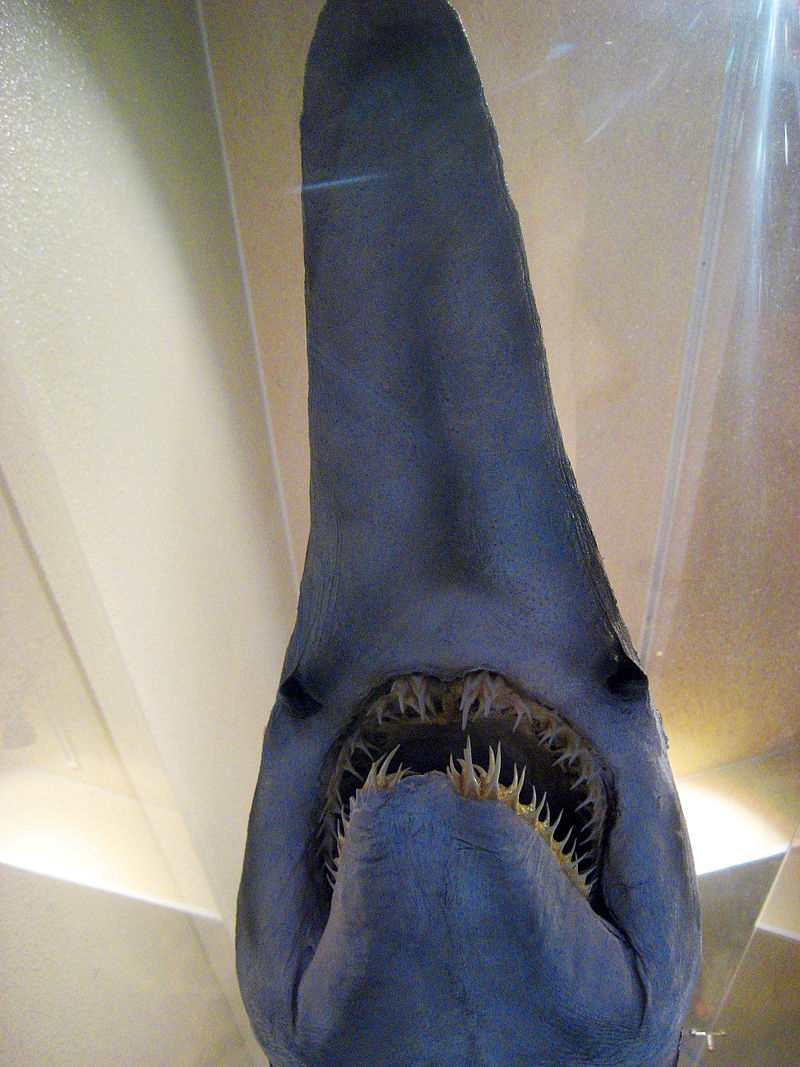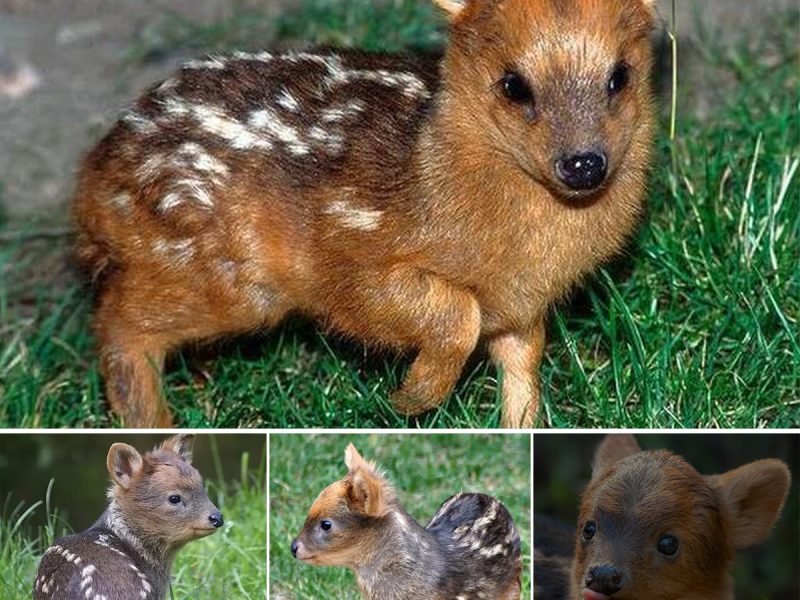Also known as the Living Fossil, this rare species of deep-sea shark is the only extant representative of the Mitsukurinidae family which dates back over 125-million years.

A living fossil. Photo: Dianne Bray
The goblin shark (Mitsukurina owstoni) has many peculiar characteristics that help to describe precisely what the creature is like. It has a pink skin and a very distinct profile featuring an elongated, flattened snout. Within it are protruding jaws filled with nail-like teeth. And there is much more.
The goblin shark’s flabby body is paired with small fins, and scientists therefore speculate it is very sluggish in movement. Because of that and its poor eyesight, the goblin shark has devised a hunting method that has been described as ambush predatory. Since its low density flesh and large oily liver makes the shark neutrally buoyant, it can silently drift towards its prey without making much in the way of movements that would otherwise scare it off. As soon as the target is within range, the uniquely positioned jaws in its mouth snap forward and catch the unsuspecting snack, mostly crustaceans, cephalopods and teleost fish.

The goblin shark’s jaws extend drastically when feeding. Source
Talking of those jaws, they contain an incredible amount of teeth arranged in multiple rows. The upper jaw of the goblin shark contains anywhere between 35 and 53 rows of teeth, while the lower jaw has 31 to 62 rows of teeth. That’s an entire mouthful of teeth, so to say.
Even more interestingly, the goblin shark’s long snout is covered with “ampullae of Lorenzini” that enable it to sense even the tiniest of electrical fields produced by nearby prey, which it then snatches up by rapidly extending those jaws.

The goblins shark has an incredible number of teeth in multiple rows and ampullae of Lorenzini that enable it to sense minute electric fields produced by nearby food sources. Photo: Hungarian Snow
Measuring 9.8 – 20 ft (3 to 6 m), the goblin shark is truly a deep sea animal and have been caught in depths of between 890 and 3,150 feet and as deep as 4,300 feet. That said, only small numbers of goblin sharks are unintentionally caught by deepwater fisheries.
The shark’s lifespan is 30 – 35 Years, and adults are known to inhabit the deeper waters than juveniles. There have been reports of the odd goblin shark found in inshore waters as shallow as 130 feet, and a few specimens have also been caught in fishing nets in the Gulf of Mexico and in the Sri Lanka region. In fact, there have been goblin sharks found in all three major oceans which shows that they have a global distribution.
Despite the goblin shark attack shown in this video, goblin sharks are not a threat to humans, especially that they are deep-sea creatures and few of them ever come into shallower waters. On the contrary, we are a threat to them. Sadly, there has been evidence of goblin sharks eating garbage found in their natural habitat – the ocean floor. Although the animal is presently listed by the International Conservation of Nature (IUCN) under the category of Least Concern, with their habitat slowly filling with more and more human garbage that may change sooner than later. Let’s not allow that to happen.

